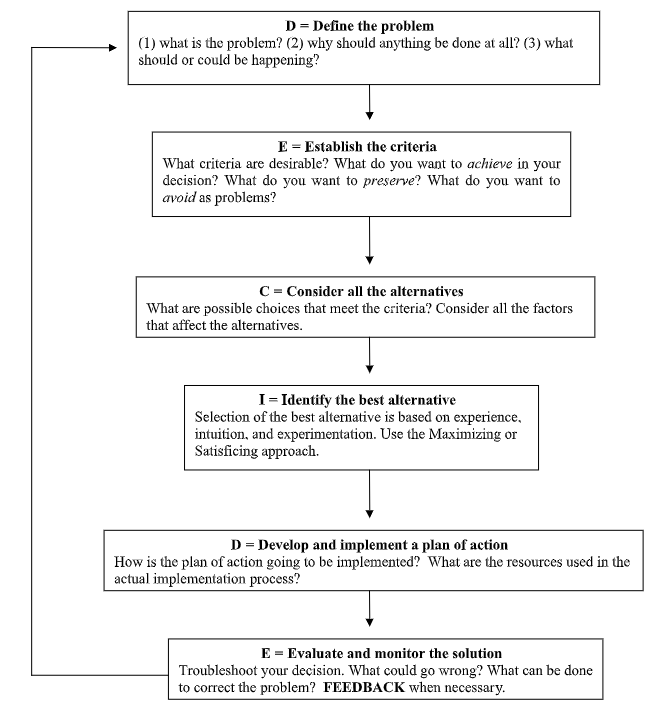When faced with two equally credible theories, wisdom seems to indicate you should go for the simplest one. Simpler solutions are easier to verify; they’re easier to execute. But, while mental models are a great way to make sense of the world, not all of them should be followed blindly. In fact, some should be studied in order to avoid them. While Occam’s razor is a popular mental model, I think it falls in the category of the ones that should be used with extreme caution. Because simpler explanations are not necessarily correct.

How Occam’s razor works
Also called the “law of parsimony”, Occam’s razor is a mental model which states that “it is futile to do with more what can be done with fewer”—in other words, the simplest explanation is most likely the right one. While William of Ockham is often credited with the formulation of this mental model, it’s an ancient one. Aristotle wrote: “Other things being equal, we may assume the superiority of the demonstration which derives from fewer postulates or hypotheses.” Ptolemy stated: “We consider it a good principle to explain the phenomena by the simplest hypothesis possible.”
William of Ockham’s idea later became the first rule of philosophical reasoning in Principia Mathematica by Isaac Newton: “We are to admit no more causes of natural things than such as are both true and sufficient to explain their appearances.” Even Albert Einstein created his own, more nuanced version of Occam’s razor: “It can scarcely be denied that the supreme goal of all theory is to make the irreducible basic elements as simple and as few as possible without having to surrender the adequate representation of a single datum of experience.”
Occam’s razor is a popular mental model, to say the least. But, before we move on, let’s address your burning question. Why is Occam’s razor called a razor? This mental model cuts away competing solutions, leaving the simplest—and supposedly most likely—explanation in place. By slicing and leaving aside more complex theories, it metaphorically acts as a razor.
This all sounds great. We don’t want to make things more complicated than they need be. But using Occam’s razor is also risky. Both our minds and the world are complex machines which cannot be grasped by applying such a simplistic approach to decision making. Conflating simple with correct can be dangerous, so it’s important to know the limitations of this approach.

The case against Occam’s razor
Occam’s razor is pretty easy to understand. It says that other things being equal, simpler explanations are generally better than more complex ones. It is used everyday by scientists to choose between competing theories. The problems?
First, there is actually no empirical evidence that the world is simple, and therefore simpler solutions are more likely to be correct. In fact, many scientific theories have become more complex over time, as researchers would uncover new data.
For example, Ernst Mach—who advocated for a version of Occam’s razor, which he called the Principle of Economy—claimed that molecules didn’t exist because they were too small to detect directly. Einstein later published a paper on brownian motion, the random motion of particles suspended in a fluid—a more complex theory—which confirmed the reality of molecules. (Mach also once said “I don’t believe that atoms exist!” to which Einstein replied with a demonstration that marked a turning point in the acceptance of atomic theory—these two must have been great friends)
In The Meaning of Relativity, Einstein stated: “In my opinion the theory here is the logically simplest relativistic field theory that is at all possible. But this does not mean that Nature might not obey a more complex theory.”
Second, in a real-world setting, it’s impossible to compare explanations and solutions with all other things being equal. You cannot run A/B testing for your life and there is no alternative for critical and logical thinking.
Occam’s razor is a conservative mental model, which may prevent you from exploring complex but interesting solutions. While theorists may thrive for mathematical beauty, it makes no sense to go for the most elegant solution when trying to figure out a real-life problem.
The biggest mistake people make with this mental model is to assume it reasonable to transpose a philosophico-scientific principle to messy day-to-day challenges. It may also be used as a way to gloss over complex but crucial components in an argument, thus falling prey to confirmation bias—our natural tendency to interpret information in a way that affirms our prior hypotheses.
Occam’s razor may be useful in very specific scientific settings. For example, doctors use a version of it—“when you hear hoofbeats, think horses, not zebras”—to ensure they go for the simplest diagnosis to explain their patient’s symptoms. And even this approach has been criticised by researchers.
But for most of us, there are stronger, more applicable alternative strategies. They do require more work, but as we said: the world is not simple.

An alternative to Occam’s razor
Before choosing a strategy, it’s important to understand the neuroscience of decision-making. While we would like to think that most of our decisions are rational, it is far from being the case. When making a decision, a lot is going on inside our brains: many parts of the cortex get involved, emotional regulation comes into play, and the fight-or-flight response pushes us to decide as quickly as possible. In short, we have less control than we believe.
This is why using decision-making strategies can be helpful to guide our choices in a more rational way. And there is one in particular I like to use.
The DECIDE framework was designed in 2008 by Professor Kristina Guo. It consists of six steps: defining the problem, establishing the criteria, considering the alternatives, identifying the best alternative, developing and implementing a plan of action, and evaluating the solution.

As you can see, it’s ironically very close to the scientific method, but it’s more practical and takes into account more complicated but equally interesting solutions before making a decision.
The DECIDE framework has in fact been originally designed for healthcare managers to make effective decisions in an increasingly complex work environment, where they need to juggle numerous medical, ethical, economic, legal, technical, and organisational concerns.
Whether you choose to use a more nuanced version of Occam’s razor or the DECIDE framework, it’s important to understand dynamic systems and to use second-level thinking when making a decision. Our choices can have unintended consequences, and only by considering several alternative solutions can we try to minimise—but not entirely avoid—mistakes.
